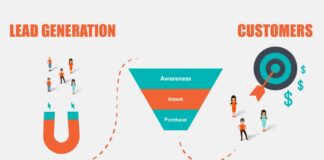Table of Contents
Website sustainability is an essential factor to consider when building a website. By making your website sustainable, you can reduce your website’s carbon footprint, save money, and positively impact the environment.
Sustainable websites are built with the environment in mind. They are designed to reduce energy consumption, minimize waste, and use renewable resources. Can SEO be used to improve website sustainability? What do sustainability and SEO have to do with each other?
While it may seem out-of-this-world to link the two concepts, SEO best practices can make a change for the environment. Here are five ways to use SEO to improve your website’s sustainability.
Design easy-to-navigate webpages for search engines users
Google strives hard to give search engine users what they want. Its algorithms constantly improve to provide users with the most relevant and helpful search results for their queries. And one of the many signals used in SEO ranking is how easy it is to find what you’re looking for on a webpage.
That’s why it’s essential to create for users, not the search engine. Creating easy-to-navigate web pages helps reduce the number of people who leave your site without taking any desired action. It also helps improve the overall experience people have when they visit your site, leading to more conversions and repeat visitors.
How can you do that? By following a few simple design tips:
Layout
The layout of your page is crucial because it will determine how easy it is for users to find the content they are looking for. A well-thought-out layout will help users navigate your page more easily and find the information they need.
For example, you should put the most important information “above the fold,” which is the page area that can be seen without scrolling. It’s where users will look first, so you want to make sure your most important content is visible.
Design for scanning
When people visit your page, they will usually not read every word. Instead, they will scan the page to look for the information they need. That’s why it’s crucial to design your page to make it easy to scan. For example, use headlines and subheadings to break up your content and make it easier to read.
You can also use lists, bullet points, and images to break up your content and make it easier for users to find the information they are looking for.
Use typography to your advantage
Using typography on your page can also impact how easy it is to navigate. For example, use different font sizes and weights to give users a hierarchy of information. That way, they can quickly scan the page and see what is most important.
You should also use white space to your advantage. Too much text on a page can be overwhelming for users. By using white space, you can break up your content and make it easier to read.
Improve writing style
Google is smart. They understand what content is about by looking at its title, meta description, and headers. But they also understand the content’s tone of voice from its words, sentence structure, and even choice of vocabulary.
That’s why it’s crucial to ensure your content is very straightforward and easy to read. It should have short sentences and common words that are easy to understand.
It’s also essential to use an active voice rather than a passive voice. In other words, say “we did this” instead of “this was done.” It makes your content sound more assertive, which is something Google looks for.
Here are a few more tips:
- Use contractions. They make your writing sound more natural and less formal.
- Start sentences with common words. It helps Google understand what the sentence is about.
- Use transitional phrases to move from one idea to another smoothly.
- Break up long paragraphs into shorter ones. No one likes to read a massive wall of text.
- Use the write keyword phrase.
Use social media to share your content
Social media can help your website’s search engine optimization and sustainability. How? By sharing your content on social media, you essentially give search engines more opportunities to find and index your content.
The more places your content appears online, the greater the chance it has of being found by someone searching for information related to your business or website.
Additionally, social media can help build links to your website, which is another important factor in website SEO. When someone shares your content on social media, they are essentially creating a link to your website. The more external and internal links you have to your website, the higher your site will rank in Google search engine results pages.
How does it link to sustainability? When you share your content on social media, you are increasing its visibility and reach. The more people who see your content, the more likely it is to be shared, liked, and commented on.
And when your content is shared, liked, and commented on, it becomes more visible on search engine results pages. In other words, social media can help your content become more sustainable over time.
Conclusion
These three tips, when used together, can help you improve your website’s sustainability and make it easier for both users and search engines to navigate. Remember to have a web design that’s easy to navigate with a focus on the user experience, write in an engaging style that encourages social media shares, and use SEO best practices to ensure your content is being found.
Another thing you can do is use green web hosting that uses renewable energy to power its servers instead of relying on fossil fuels.
If you follow these simple tips, you will be well on your way to creating a sustainable website that performs well in SEO rankings. Work with an SEO marketing agency to get the most out of your content and improve your website’s chances of ranking high on search engine results pages. They can help you create an SEO strategy and digital marketing strategy that works for your business and budget.





![How to Fake Location on Snapchat Map in 2024 [Ultimate Guide] Fake Location on Snapchat](https://techenworld.com/wp-content/uploads/2024/02/Fake-Location-on-Snapchat-218x150.jpg)









